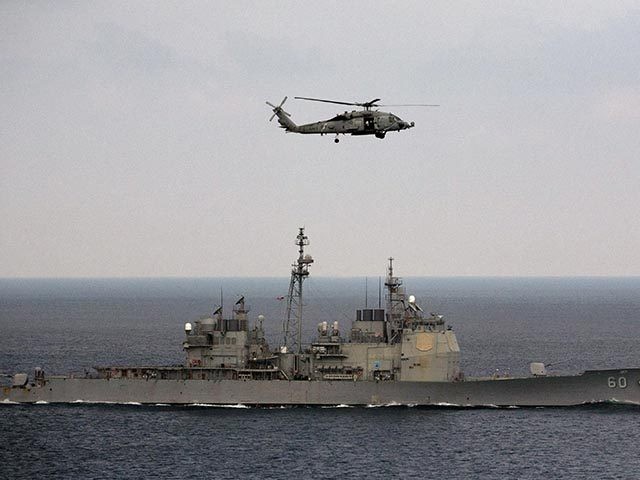The annual Malabar naval exercise began on Tuesday, launching from the Indian port of Visakhapatnam on the Bay of Bengal.
The Malabar wargame began in 1992 as a joint exercise between the U.S. and Indian navies. Japan joined in 2015, and this year marks the return of Australia after 13 years of absence, putting all four members of the “Quad” alliance against Chinese expansionism on the roster.
The Australian Defense Force (ADF) withdrew after the 2007 Malabar exercise due to Indian and Australian concerns about their relationship with China. Mounting tensions with China are the reason India agreed to bring Australia back into the fold, as requested by the U.S. and Japan.
Australian officials welcomed the opportunity to train with their Quad allies and develop greater interoperability with the equipment used by the other navies.
“It will bolster the ability of India, Australia, Japan and the United States to work together to uphold peace and stability across our region,” Australian Foreign Minister Marise Payne said when the invitation to participate was announced in October.
Sreeram Chaulia of the Jindal School of International Affairs told Voice of America News on Tuesday that Australia’s return sends a strong signal to China about the Quad’s determination to protect navigation rights and international law in the Indo-Pacific region.
“In 2007 the Chinese threatened and cajoled different members to drop out and effectively defanged it, but this time the Malabar exercises won’t wind down because the coming decade is going to be very different – the threat perception of Chinese power is much higher now in all these four countries, so it has a lasting future,” Chaulia said.
“In the absence of Australia, the Malabar was confined to narrower maritime spaces, but with another naval force that has power projection capabilities beyond its traditional domain and further west towards the Indian Ocean, its coverage has expanded,” Chaulia observed.
Other analysts said China’s military standoff with India in the Himalayas, and China’s growing influence among smaller Indian Ocean nations, clearly prompted India to stop caring about China’s opinion on which nations should participate in the Malabar exercise.
“The strategic show of intent to China is unambiguous,” a senior Indian official told the Times of India. China has thus far limited its reaction to hoping that the Malabar exercise “will be conducive to regional peace and stability, rather than the opposite.”
The first phase of the Malabar exercise will be conducted in the Bay of Bengal between Tuesday and Friday. The second phase is scheduled for November 17 to 20 in the Arabian Sea. TOI anticipated that Phase Two will be “more power-packed” and could include both a U.S. aircraft carrier and India’s lone operational carrier, INS Vikramaditya.
The entire exercise was described by the Indian Navy as “non-contact, at sea only” due to coronavirus concerns.
India supplied five ships for Phase One, including a destroyer, a frigate, and a submarine. Indian naval aircraft will also participate. The United States sent the guided missile destroyer USS John S. McCain, Australia sent the frigate HMAS Ballarat, and Japan dispatched the destroyer JS Onami.
“The co-operative deployment allows HMAS Ballarat and broader Navy to hone our warfare and mariner skills and develop our ability to operate and communicate together,” the Ballarat’s Commander Antony Pisani said on Tuesday of Australia’s participation.
“The shared mutual trust both navies have for each other ensure such activities are mutually beneficial, enhancing the readiness and preparedness of the ships that undertake them. This deployment reinforces our commitment and right to exercise freedom of navigation and overflight under international law across our Indo-Pacific region,” Cmdr. Pisani said.
“We find tremendous value in sailing with our close ally Australia, as well as our other allies and partners in support of a free, open, secure and prosperous Indo-Pacific region. The training we are conducting while we operate together helps both ships’ crews improve their mariner skills and warfighting proficiency, in addition to the interoperability benefits we accrue by working together as a team,” said Commander Ryan Easterday of USS John S. McCain.

COMMENTS
Please let us know if you're having issues with commenting.